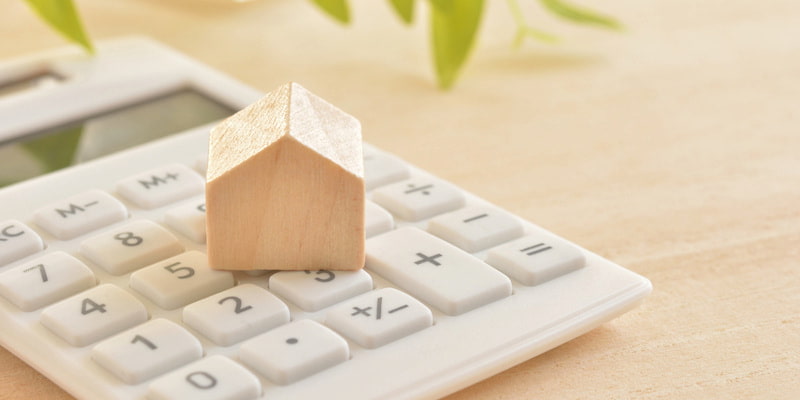Top Real Estate Investment Strategies to Leverage your SDIRA

Estimated Reading Time: 8 minutes
Ready to use real estate to unlock the true potential of your retirement account but not sure where to begin?
The good news is that no matter what your strategy is and the amount of funds you have available, there are several ways you can use your SDIRA to invest in real estate.
Not bad for money that could have otherwise stayed tied up in stocks and bonds. Keep reading to learn four real estate purchasing strategies to make your retirement portfolio work harder.
5 Steps to investing in Real Estate with an SDIRA. Get your free copy now >
Direct Purchase
When you think about investing in real estate, this is likely the first strategy that comes to mind. Put simply, your SDIRA pays cash for the investment property and then holds the title to it. A direct investment involves purchasing a physical property and collecting the income generated within your self-directed retirement account. It is the simplest and quickest way to invest with the funds in your SDIRA.
Here’s an overview of how it looks:
- Start by opening a SDIRA.
- Fund your account via a transfer, rollover, direct contribution, or a combination of these.
- Find the property you’d like to purchase. (Don’t forget to do your due diligence.)
- Direct Entrust to initiate the transaction.
- Submit your investment request online via the Entrust Client Portal.
- Submit a Real Estate Buy Direction Letter (paper form).
- Entrust funds the earnest money deposit.
- Once closing documents are executed, Entrust funds the purchase.
- Close escrow.
Once you’ve completed these steps, the investment property belongs to your SDIRA. This means all income and expenses from the property should flow in and out of your SDIRA rather than your personal bank account.
Not every SDIRA, however, has enough funds to make a direct purchase. The next two strategies are great options for investing in real estate if you need additional funds.
Partnering
Partnering allows investors to combine their capital and expertise to invest in real estate. In a partnering scenario, your SDIRA can partner with external sources, including the SDIRA holder’s additional funds. There are a number of different ways this could work, but here are a few popular arrangements:
- Combining your SDIRA funds with other people’s SDIRA funds
- Combining your SDIRA funds with other people’s cash
- Partner with multiple SDIRAs and multiple sources of personal funds
- Combining your SDIRA funds with your own cash or other SDIRAs you hold
One major benefit associated with this purchasing strategy is that you can partner with anyone at the time of the transaction, including individuals that would usually be considered disqualified persons. However, after the transaction is closed, you cannot conduct any further business with a disqualified person.
In this type of transaction, each partner owns an undivided interest in the property, proportionate to the investment made. For example, if your SDIRA invested 40% and an outside investor invested 60%, you would have a 40/60 split. The percentage of ownership must be stated on the title when the transaction is recorded.
For example: “The Entrust Group, Inc. FBO John Smith Account #12345, [Percentage of ownership] % undivided interest.”
Here’s how to partner with others to purchase real estate using your SDIRA:
- Start by opening a SDIRA.
- Fund your account via a transfer, rollover, direct contribution, or a combination of these.
- Identify the other source(s) of funds you would like to partner with.
- Perform your due diligence and confirm that the investment fits your strategy.
- Determine the percentage of ownership of each partner/source of funds.
- Direct Entrust to initiate the transaction.
- Submit your investment request online via the Entrust Client Portal.
- Submit a Real Estate Buy Direction Letter (paper form).
- Entrust funds the earnest money deposit.
- Once closing documents are executed, Entrust funds the purchase.
- Close escrow.
Because your SDIRA owns the property, all income and expenses should flow in and out of your SDIRA and be proportionate to the percentage of ownership. In addition, if the property is sold, your SDIRA receives the portion of the proceeds proportional to the percentage of ownership.
Leveraging: Non-Recourse Loans
Did you know you can use a non-recourse loan to supplement your SDIRA’s funds to purchase real estate?
Unlike a traditional mortgage, a non-recourse loan is not based on your personal credit and is required by the IRS when your SDIRA uses financing to invest in real estate. It’s necessary because IRS Section 4975 prohibits you from obtaining financing for your SDIRA by using your personal credit as its basis.
The key difference between a non-recourse loan and most traditional mortgages is that a lender loans money to the SDIRA using only the property as collateral. Should there be a default on the loan, the lender cannot seize additional collateral if the value of the property doesn’t cover the difference.
Instead, the SDIRA is responsible for the loan, and the SDIRA holder is not held personally liable for the loan.
The steps for leveraging your SDIRA to purchase an investment property are:
- Open a SDIRA and fund it via a transfer, rollover, direct contribution, or a combination of these.
- Choose the property you’d like to purchase.
- Research lenders that offer non-recourse loans. Keep in mind that different lenders may have different requirements. (Looking for lenders that give this type of loan? Check out our list here.)
- Apply for the non-recourse loan.
- Obtain your non-recourse loan. Note that the borrower of the loan is your SDIRA, not you. Proper vesting on the loan documents is necessary. This usually takes about 4-6 weeks to process.
- Direct Entrust to initiate the purchase.
- Submit your investment request online via the Entrust Client Portal.
- Submit a Real Estate Buy Direction Letter (paper form).
- Entrust funds the earnest money deposit.
- Once closing documents are executed, Entrust funds the purchase.
- Close escrow.
While a non-recourse loan might be a way to make your investment strategy a reality, keep in mind that it’s riskier for the lender. This means you may not be able to obtain as much of a loan as you would with your personal credit as collateral.
Note that leveraging may subject your SDIRA to unrelated business income tax (UBIT). You can learn more about UBIT here. Be sure to consult an experienced tax advisor if you are considering this option.
Investing Through an LLC
Some investors invest in alternative assets directly with their SDIRA, and some prefer to purchase these investments through an LLC their IRA owns. Managing your investments through an LLC your IRA owns means that in the eye of your SDIRA provider, you own a single asset: the LLC.
This structure allows you to bypass requesting funds from your SDIRA custodian whenever you need to maintain your real estate property. It also allows you to purchase and sell investments inside the LLC without involving your custodian.
An LLC may also save you fees because many custodians view it as a single asset regardless of the number of investments or properties held within it.
How does it work?
A Limited Liability Company, or LLC, is a distinct legal entity. Your SDIRA forms an LLC and is the owner or sole member of the LLC. The LLC opens a business bank account that is established under the name of your LLC and is funded by your SDIRA. The LLC can then invest in any investment allowed by the IRS.
While your SDIRA is the owner of the LLC, you can designate yourself as a “managing member” of the LLC. As managing member, you are entitled to manage the finances of the LLC’s account.
Now here’s where the real magic happens.
As managing member you have checkbook control — a term used when an IRA holder has complete signing authority over his or her retirement funds.
Though this structure generally takes more effort to establish initially and incurs costs for formation and maintenance, it has a few key benefits. You can complete faster transactions, thanks to checkbook control, and this easy access to funds means you can react quickly in a competitive buying market.
If you want to go the LLC route, here’s how to get started:
- Open and fund your SDIRA.
- Create your LLC. (Need help with this? Here’s a list of contacts Entrust account holders have used to establish single-member LLCs.)
- Designate the member of the LLC and responsible party to manage the LLC.
- Apply for an EIN.
- Write the operating agreement, and send it to Entrust.
- Open an LLC bank account.
- Move SDIRA funds to your LLC.
- Find the property you’d like to purchase and complete the necessary due diligence of course.
- Initiate the transaction with your realtor, using the funds in your new LLC to make the purchase.
- Close escrow.
This might be a strategy worth considering if you want to invest in several real estate properties or you want to buy and sell investments without involving your custodian. You’ll want to be sure to get legal and tax advice to decide the best strategy for you.
Which investment strategy is right for you?
Purchasing real estate with your SDIRA can be an effective way to diversify your portfolio and grow an asset that can be passed down through generations. Choosing your preferred investing path requires understanding everything from the market that you’re considering to how much risk you’re willing to take. It can also be helpful to speak with a financial advisor as well as a real estate agent that specializes in investment properties.
Looking for an actionable step you can take today to kick-start your journey? Get your free copy of the 5 Steps to Investing in Real Estate With a Self-Directed IRA.




























0 Comment